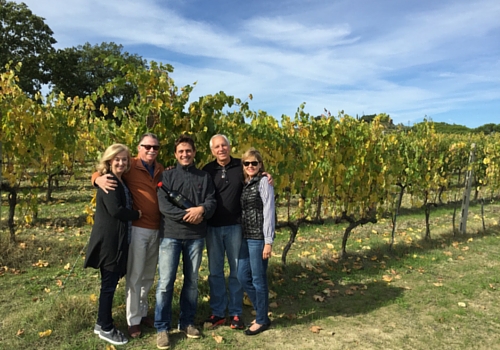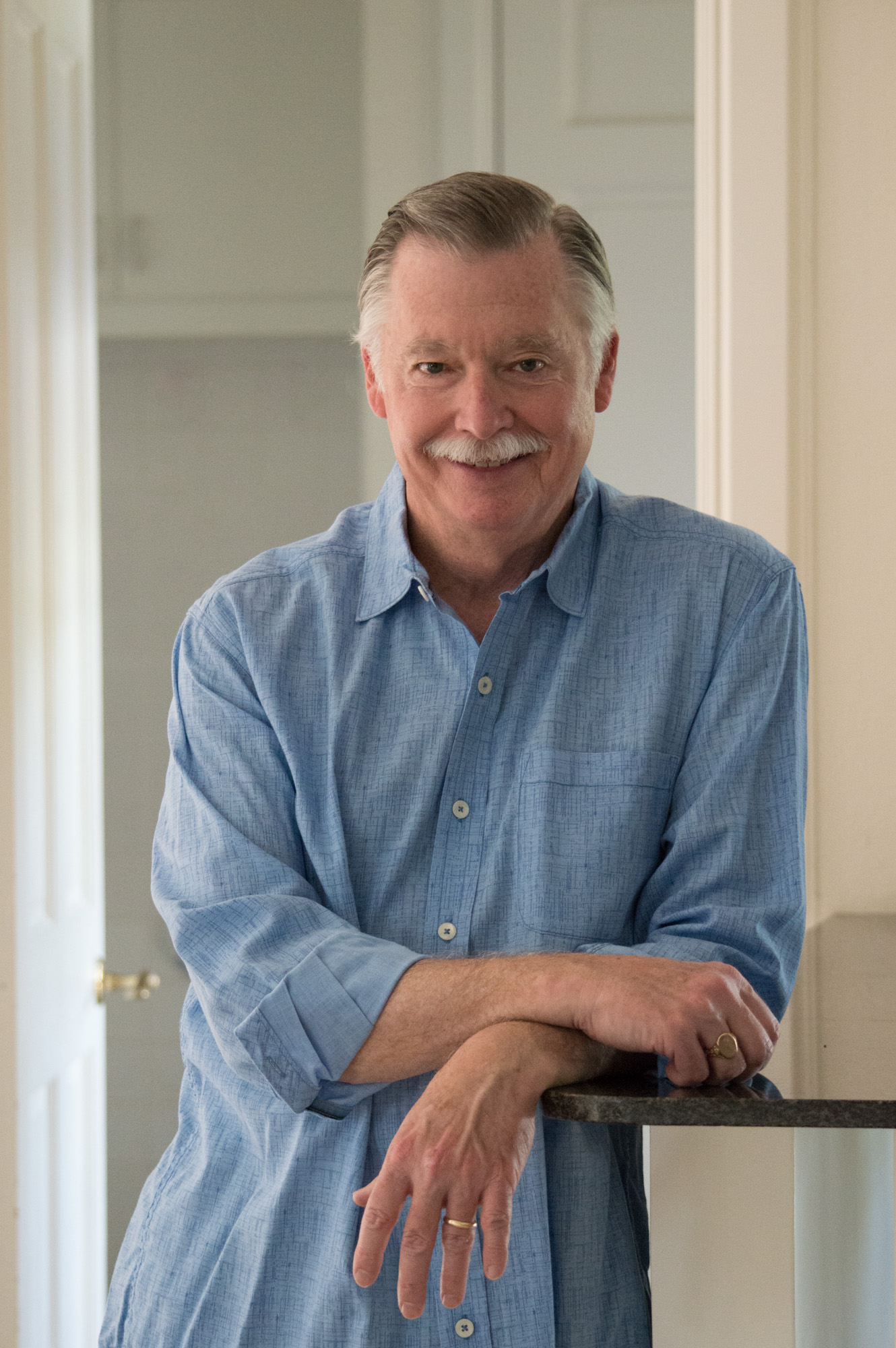
Leadership Secrets from an Italian Vineyard
Published in LeadershipJanet and I visited several wineries last week in the Tuscany region of Italy with our good friends Georgia and Tom Davis.
There was a chill in the air, leaves were turning and the grapes had just been harvested, so we were able to observe the next phase of wine-making.
Montalcino is one of Tuscany’s most important wine-growing regions with 250 wineries, yet is only one-fifth the size of the city of Rome. About 2,000 people live in the village of Montalcino and another 2,000 people live in the countryside.
This photo was taken at one of our favorite stops in Tuscany with winemaker Fabio Giannetti at his family’s Montalcino winery la Fornace, or “the furnace.” In 1490, one of Fabio’s buildings served as a kiln for making bricks, but later it was decided the kiln’s hilltop location and rich soil could be put to better use as a place for making great wine. Fabio’s family has been caring for this winery for generations and named it la Fornace out of respect for the land’s history.
Same Factors, Different Results
A good bottle of wine is the product of grapes, climate, art and science. Wine is bottled love.
We were reminded that even when the same type of grape is planted in hundreds of different vineyards—for instance, the Sangiovese grape that produces Brunello di Montalcino wine—the resulting wine produced by each winery can be strikingly different.
For the Sangiovese grape—as with any grape—the minerals in the soil and the grapevines’ exposure to sun, wind and water are factors that affect the grapes. They require sufficient warmth to ripen fully, but not too much warmth that can dilute their flavors. Winemakers must be sensitive to climate conditions that can produce high levels of acidity and tannins in the grapes, which will yield a harsher tasting wine.
“Our wine is based on our experience,” says Fabio. “There’s no such thing as ‘too much experience.’”
The methods chosen by the winemaker for growing the grapes, knowing when to harvest them, processing the grapes, then aging and storing the wine all contribute to the wine’s taste.
Leaders of high-performing organizations have a lot in common with the best winemakers in the world.
How is it that some leaders—faced with the same competition, the same regulations, the same economic conditions and working in the same industry—are able to produce better results than other leaders?
An Italian winemaker shared some of the secrets from his vineyard. These wine-making practices apply to leaders interested in nurturing and sustaining a culture of high performance in their workplace.
Cultivating Your Vineyard
Accomplished winemakers like Fabio have a deep respect for the land and bring tremendous pride to their craft to produce incredible-tasting wines.
In order to produce outstanding results in the workplace and marketplace, great leaders establish and nurture a culture in their organizations where:
- Character counts. Fabio has a very clear idea of how he wants his wine to look, smell, taste and age, and he has set very high standards for getting these results. Fabio calls his approach to wine-making his “philosophy” and the result is one of the most elegant wines in the world. Like a master winemaker who appreciates the character of the grape, exceptional leaders appreciate their organizations’ outcomes are a direct result of their employees’ character and, ultimately, their performance to achieve the organization’s vision. Without great grapes, there can be no great wine. Without great people, there can be no great results. In high-performing organizations, only people who share the values of the organization and its vision for success are invited to join the organization.
- Great care is taken to ensure a spectacular outcome. Grapevines can flourish or falter, and so can people. “The soil,” says Fabio, “does 70% of the job. The winemaker respects the soil and does his best to bring out the best in the grapes.” In the vineyard, the winegrower digs ditches to ensure proper drainage. Roses are planted to serve as early warning systems for disease. Climate changes are monitored to understand how changes in rain, temperature and sun affect the grapes. Just as in the vineyard, great leaders respect their employees and know that a talented person who does not understand what’s expected of them cannot perform at peak levels. What’s more, the best leaders know that employees must be developed through mentoring and given guidance throughout their career so that they remain engaged and eager to learn new skills and obtain new experiences to increase their value for themselves and for the organization.
- Unwanted elements are removed. Once the grapes are harvested and fermentation begins, the winemaker must be particularly attentive. The grapes are placed in steel barrels and at this phase—no longer grapes and not yet wine—the “must” provides clues as to whether the wine will be good or spectacular. During this six-month process, the winemaker removes sediment—skins, seeds, dead yeast cells, bacteria, pulp and occasionally stems. A wine with too much suspended matter will appear cloudy and dull, and unwanted sediment also affects the taste. Fabio says, “Producing great wine is a matter of taste and test.” The fermenting must is tested two times per day over a three-month period and tasted by the winemaker. The testing and tasting tell the winemaker what adjustments need to be made to produce a great-tasting, long-lasting wine Like fine winemakers, leaders should be watching performance continually at every level of the organization and determining what adjustments should be made. For leaders expecting high levels of performance, tracking does the heavy lifting of accountability. Mistakes happen. Underperformance is a pattern. Leaders must determine what’s causing the underperformance and then tell the employee where that person stands. Failure to do so is a disservice to the employee and the organization. Employees who are unwilling or unable to meet their performance expectations must be removed from the organization.
- Patience has its rewards. Making fine wine requires plenty of patience. It takes five years before a newly planted grapevine bears fruit. And it is another five years before a grape worthy of being labelled Brunello di Montalcino is harvested, fermented, aged and ready to drink. The investment of money and time to produce a bottle of wine is significant. Boasting a long shelf life, Brunello di Montalcino is even better 15 years from the date of the harvest. Few leaders have this type of patience. Leaders of high-performing companies that I interviewed during the most recent recession all took a long-term approach to investing in their business by training their people, improving their processes and getting ready to emerge stronger when the market turned. Today, these companies continue to out-perform other companies in their industry. While leaders of these high-performing companies bring a sense of urgency to their daily work, they also are focused on the longer-term view. This mix of urgency and patience is what separates high performing companies from all the others. The same is true for wine: The best-tasting and most expensive wine is almost always the oldest wine.
No two grapes are exactly alike. No two growing seasons are exactly alike. Yet great winemakers find a way to bring out the best their grapes have to offer year after year after year.
No two people are exactly alike. And no two businesses are exactly alike. Yet great leaders find a way to win year after year after year.
What kind of workplace environment are you cultivating to bring out the best your people have to offer?
Ready to reset?
Attend my free Accountability webinar: I Did It! to set and achieve your 2021 goals.
- February 17th from 11 AM – 12:30 PM Central Time
- My free webinar will help you:
– Sharpen your personal goals
– Improve time management
– Tackle tough work-related issues
– Support remote workers
Learn More
To dive even deeper into the topic of accountability, I invite you to purchase a copy of my bestselling book, “Accountability: The Key to Driving a High-Performance Culture.”
Become a better leader.
Download my three free e-books.
Free Tips
Sign up to receive free tips on business, leadership, and life.
Get My Latest Book
HOW LEADERS DECIDE
History has much to offer today’s current and aspiring leaders.
Business schools teach case studies. Hollywood blockbusters are inspired by true events.
Exceptional leaders are students of history. Decision-making comes with the territory.



